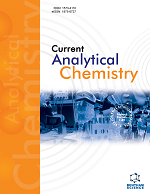
Full text loading...
pH indicators have long been utilized for rapid pH determination, relying on color changes to indicate pH values. However, visual color detection suffers from low sensitivity due to the limitations of the human eye. In this study, we explored the use of pyrylium compounds as pH indicators.
Three pyrylium compounds were synthesized, and their pH-dependent UV-Vis absorption and color changes were investigated. UV-Vis absorption studies revealed distinct pH-dependent changes, enabling the compounds to function as dual-transition pH indicators. The pKa values of these indicators can be tuned by changing the substituent on the chromophore core.
Principal component analysis of the mixture of these three compounds demonstrated the ability of the system to measure pH with high precision, making it suitable for real sample analysis. Smartphone-assisted analysis was employed to exploit the potential of these indicators for wide-range (4.0-13.5) pH determination.
The obtained results demonstrated for the first time that pyrylium compounds can be used as dual-transition pH indicators. By modifying the substituents on this chromophore, indicators operating in different pH ranges can be obtained and utilized in smartphone-assisted pH detection.

Article metrics loading...

Full text loading...
References


Data & Media loading...
Supplements

